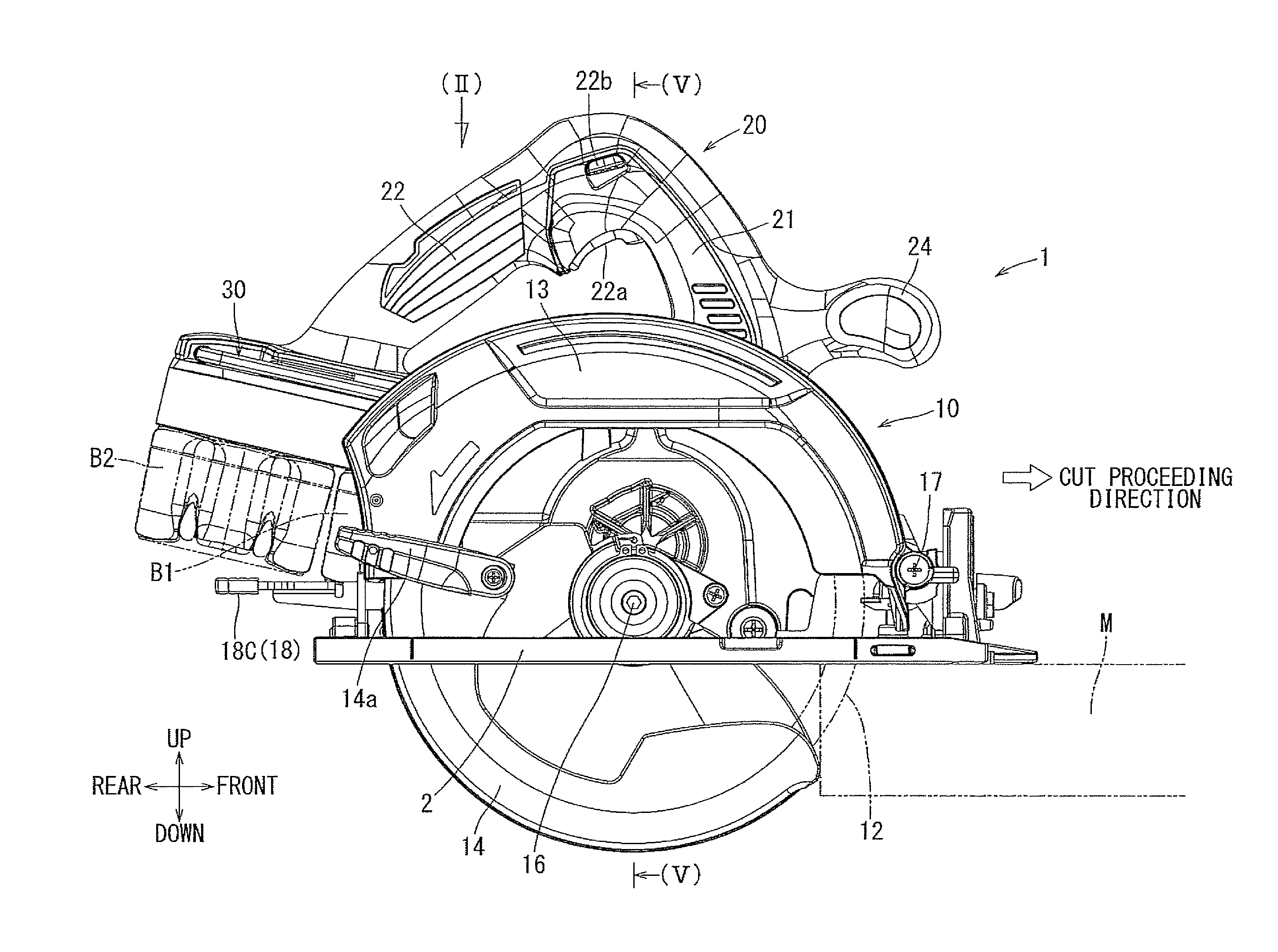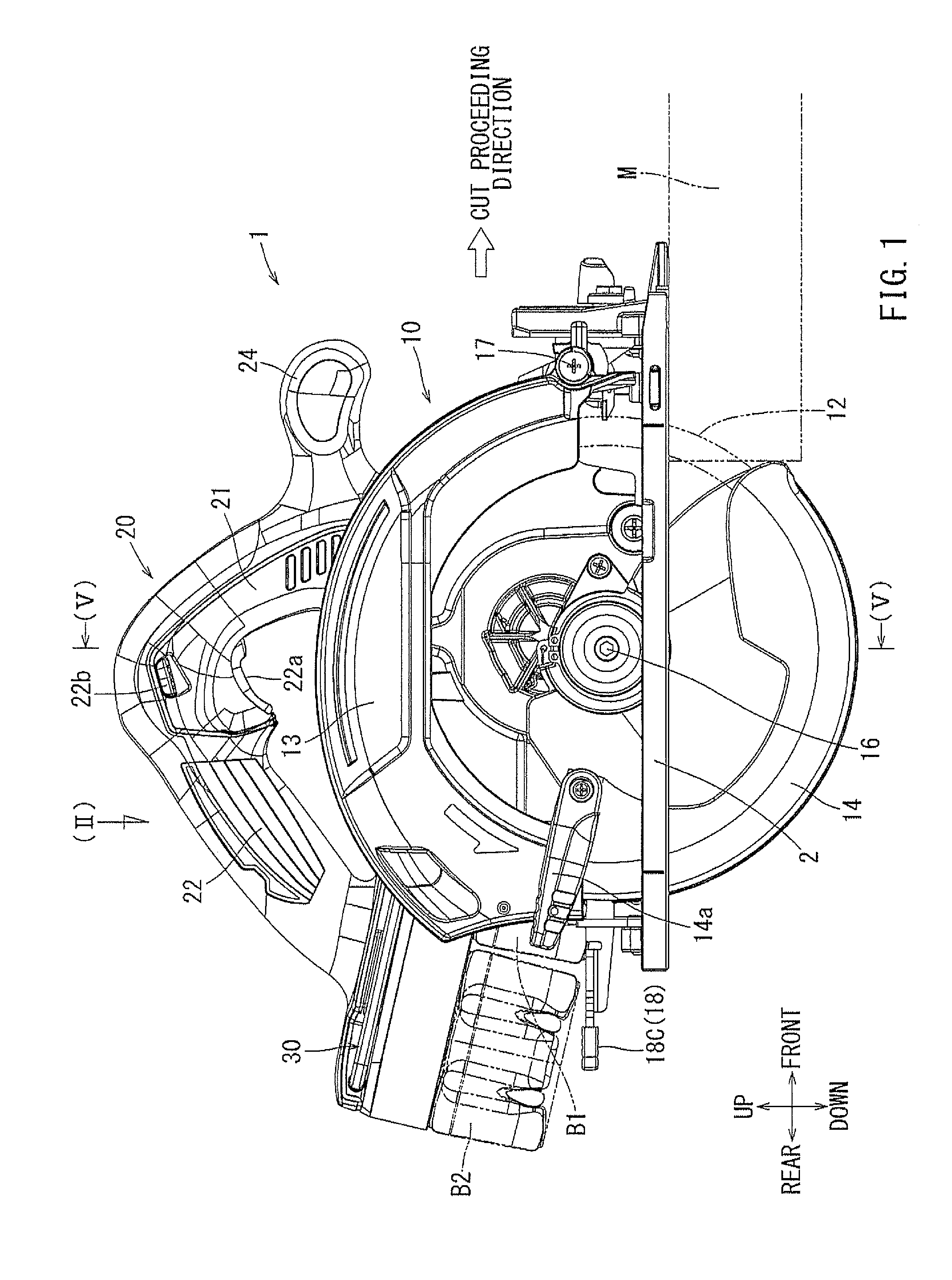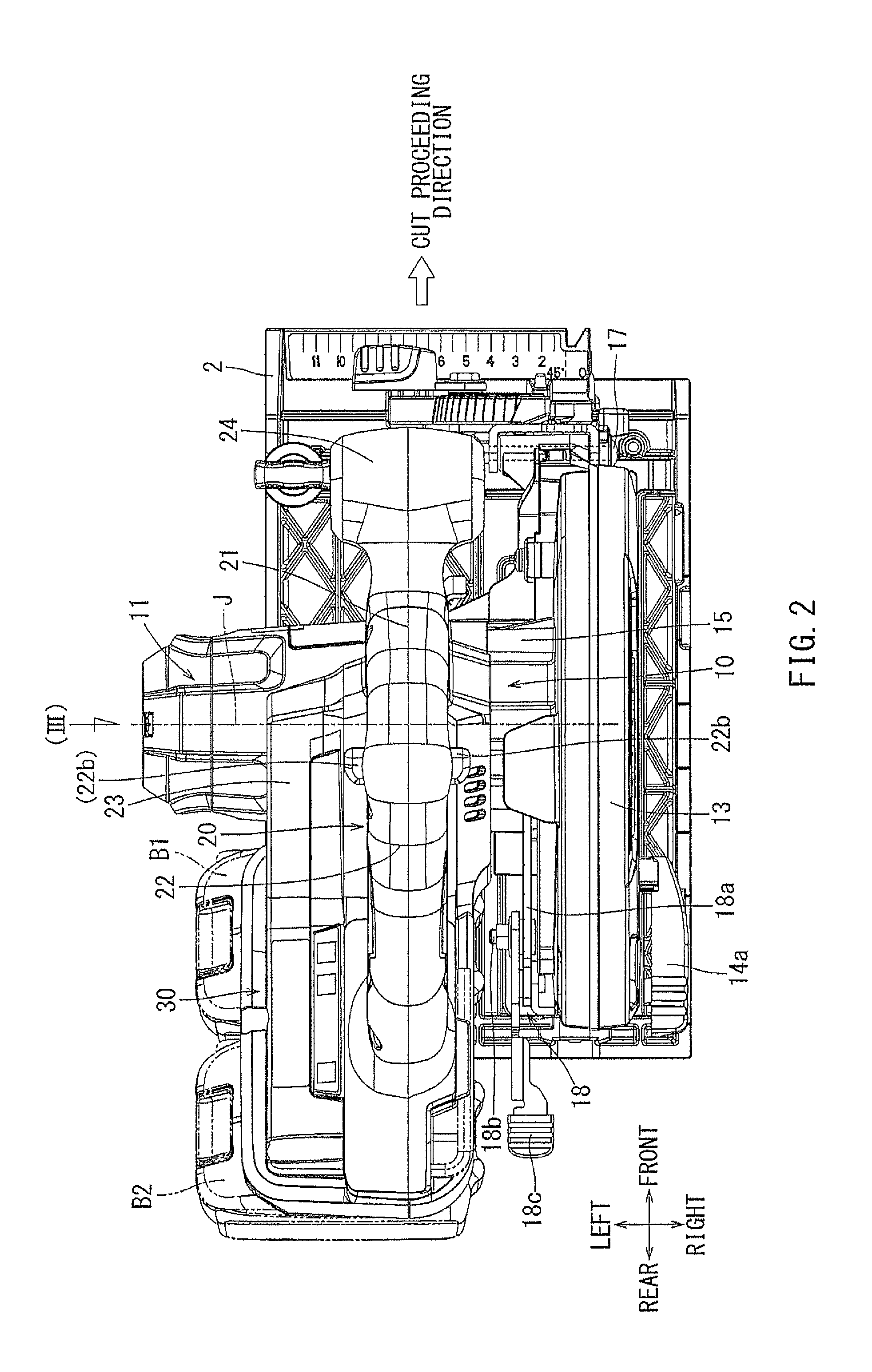Cutting device
a cutting device and battery technology, applied in the direction of metal sawing accessories, portable power-driven tools, manufacturing tools, etc., can solve the problems of high cost, and achieve the effect of excellent grasping performance of the handle portion, and easy attachment and detachment of batteries
- Summary
- Abstract
- Description
- Claims
- Application Information
AI Technical Summary
Benefits of technology
Problems solved by technology
Method used
Image
Examples
first embodiment
[0075]In the following, a first embodiment will be described with reference to FIGS. 1 through 6. FIG. 1 shows a rechargeable cutting tool 1 according to the embodiment. This cutting tool 1 may be a hand-held type cutting tool also called as a portable circular saw. The cutting tool 1 may include a base 2 formed substantially as a rectangular flat plate and adapted to contact with the upper surface of a workpiece M to be cut. The cutting tool 1 may further include a cutting tool main body 10 supported on the upper surface side of the base 2.
[0076]The cutting tool main body 10 may include an electric motor 11 configured to function as a drive source. The cutting tool main body 10 may further include a circular cutting blade 12 rotated by the electric motor 11. The range of the upper circumferential half of the cutting blade 12 may be covered with a blade case 13. The range of the lower circumferential half of the cutting blade 12 may be covered with a movable cover 14. The movable co...
second embodiment
[0103]The second embodiment will be described with reference to FIGS. 7 through 9. The second embodiment relates to a woodworking circular saw. The woodworking circular saw may be of a rated voltage of 36 V, and may use, as a power source, two 18 V batteries 110 connected in series. This second embodiment may be substantially the same as a conventionally well-known woodworking circular saw, with the exception that the two batteries 110 may be used and connected in series, so a detailed description of a traditional woodworking circular saw will be omitted. In FIGS. 7 and 9, a direction indicated by an outline arrow with a labeling of “cut proceeding direction” may be the direction in which the woodworking circular saw moves while being pushed when the woodworking circular saw is used for cutting, that is, it indicates the wood cutting direction. Further, in FIGS. 7 through 9, the directions indicated by the crossing arrows may indicate the directions as labeled therein, with referenc...
third embodiment
[0109]The third embodiment will be described with reference to FIGS. 10 through 12. The third embodiment may differ from the second embodiment in that the attachment positions of the two batteries 110 in the woodworking circular saw may be changed. In other respects, the two embodiments may be identical, so like components are labeled with like reference numerals, and a description of the same will not be repeated. In the woodworking circular saw of the second embodiment, two batteries 110 each with a terminal voltage of 18V may be respectively attached to the front portion and the rear portion of a motor housing 131A so as to be connected in series. Further, the two batteries 110 may be attached so as to be spaced from the handle 141 such that the front battery 110 is spaced apart from the front portion of the handle 141 and that the rear battery 110 is spaced from a lateral portion of the handle 141. Here, the left-hand side end of the rear battery 110 may be positioned to align w...
PUM
| Property | Measurement | Unit |
|---|---|---|
| Angle | aaaaa | aaaaa |
| Shape | aaaaa | aaaaa |
| Depth | aaaaa | aaaaa |
Abstract
Description
Claims
Application Information
 Login to View More
Login to View More - R&D
- Intellectual Property
- Life Sciences
- Materials
- Tech Scout
- Unparalleled Data Quality
- Higher Quality Content
- 60% Fewer Hallucinations
Browse by: Latest US Patents, China's latest patents, Technical Efficacy Thesaurus, Application Domain, Technology Topic, Popular Technical Reports.
© 2025 PatSnap. All rights reserved.Legal|Privacy policy|Modern Slavery Act Transparency Statement|Sitemap|About US| Contact US: help@patsnap.com



